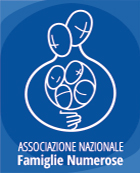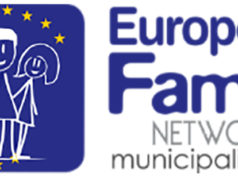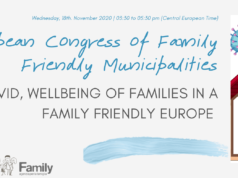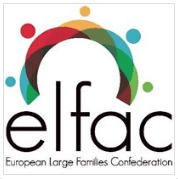La Commissione euopea propone agli stati membri di ridurre l’IVa sui pannolini, sulla cura di anziani e disabili, su alcuni prodotti farmaceutici tra cui pannolini e assorbenti, oltre che su libri e ristorazione.
Una buona notizia per le associazioni familiari che con l’Elfac in testa (la confederazione delle associazioni famiglie numerose europee, di cui fa parte anche ANFN).
Ora spetta ai singoli Stati (e quindi anche all’Italia) recepire l’invito e introdurre la riduzione dell’Iva che potrebbe passare al 4% , con un notevolissimo risparmio per le famiglie con bambini piccoli.
A seguire il comunicato stampa della commissione
VAT: Commission proposes categories of services to which Member States may apply a reduced rate
The European Commission today made a proposal to change the VAT Directive 2006/112/EC so as to provide Member States with the flexibility to apply reduced VAT rates for some specific services on a permanent basis. The Commission proposal covers areas where there is sufficient evidence that reduced rates do not create problems for the proper functioning of the Internal Market. The sectors concerned are mainly so called labour-intensive services and locally supplied services, including restaurant services. The proposal is also part of the small business act (see IP/08/165) as SMEs dominate the sectors concerned. The proposal does not alter the principle that the application of reduced rates is optional for Member States.
László Kovács, Commissioner for Taxation and Customs Union said: “I propose generalising the optional application of reduced rates in sectors where there is sufficient evidence that no real distortions to the Internal Market will occur. I want to provide certainty about the application of reduced rates beyond 2010 for labour intensive sectors and provide all Member States with the same options. There is no reason why restaurant services, for example, should be allowed to benefit from a reduced rate in one half of the European Union but not in the other half.”
In the absence of clear orientation from the Council to the Commission’s Communication of last July regarding the full revision of the system of reduced rates, the proposal only seeks to deal with issues which require urgent action while, at the same time, seeking to provide the same possibilities to all Member States.
The scope of the proposal is therefore limited and most of the services in question are already eligible for a reduced rate but only in a limited number of Member States and only for a limited period running until 2010.
The proposal does not include a general review of the numerous derogations granted to various Member States, nor is it widening the scope of reduced rates for environmental or energy saving purposes. On this last point, the Commission is currently carrying out a number of studies concerning the possible use of reduced rates for energy saving materials or energy efficient goods and services in accordance with the request formulated by the European Council in March 2008. The Commission will present the results of its analysis, accompanied by relevant proposals in the autumn.
The housing sector will no longer be limited to services linked to a social policy, as it is currently, but will be broadened to include the supply and construction of all housing, as well as all services related to the housing sector (including renovation, maintenance, cleaning, …).
Supply of restaurants and catering services, excluding alcoholic beverages, are also included.
It is proposed that labour-intensive services , should be permanently included in the list of services eligible for reduced rates. Moreover, the category is broadened to other locally supplied services of a similar nature. That is:
* Minor repair of tangible movable goods, including bikes but excluding other means of transport. Examples include shoes, clothes, computers, watches,
* Cleaning and maintenance services of all these goods and, in this case, other means of transports are included;
* Domestic care services (e.g. home help and care of the young, elderly, sick or disabled);
* All personal care services (including hairdressing, beauty services, …)
* Gardening services
* Renovation and maintenance services provided to places of worship, cultural heritage and historical monuments, as recognised by Member States.
In addition a number of small clarifications are proposed. The category of pharmaceutical products is widened to cover all absorbent hygiene products, notably including children’s nappies. Concerning medical equipment for the disabled the Commission proposes widening this category to cover all specially designed or adapted material or equipment for the exclusive personal use of the disabled (including specially adapted cars, Braille keyboards …).
Printed books, under current legislation, may be subject to reduced rates. The Commission proposes widening the definition of books to include audio-books. These are defined as ‘CDs, CD-ROMs or any physical support that predominantly reproduce the same information content as printed books’ and which do not include other material such as games.
Background
The basic rules for VAT rates are simple: goods and services subject to VAT are normally subject to a rate of at least 15%. The Member States may apply reduced rates of not less than 5% to goods and services set out in a restricted list. However, these simple rules are complicated by a multitude of derogations granted to certain Member States – and not to others – during the negotiations preceding the introduction of the VAT rates Directive (1992) or in Acts of Accession. For example 11 Member States currently apply a reduced rate to restaurant services while the 16 remaining Member States cannot. A similar situation of derogations exists for labour intensive services.
The press release and MEMO are available on this web site:
http://ec.europa.eu/taxation_customs/index_en.htm
Further information will be available on the following website:
http://ec.europa.eu/taxation_customs/taxation/vat/how_vat_works/rates/index_en.htm











